Tech Made Simple
Hot Topics: How to Fix Bluetooth Pairing Problems | Complete Guide to Facebook Privacy | How to Block Spam Calls | Snapchat Symbol Meaning
We may earn commissions when you buy from links on our site. Why you can trust us.
by Josh Kirschner on May 12, 2016
![]()
The Whistler CR90 wins the award for Best Radar Detector Under $200 for its lack of compromise, including the detection of a wide range of crucial radar and laser frequencies, excellent performance and solid feature set, including built-in GPS and red light camera database.
[Editor’s note: This story is an update from our 2013 review based on significant additional testing of the Whistler CR line head-to-head with Escort’s Passport Max series, Beltronics’ latest GT-7 model and Cobra’s 9200 BT. The testing continued to confirm the Whistler’s high level of performance relative to other detectors. Our previous pick was the non-GPS enabled Whistler CR85. However, due to significant price drops, the GPS-enabled Whistler CR90 is now well below $200 and is our new top pick.]
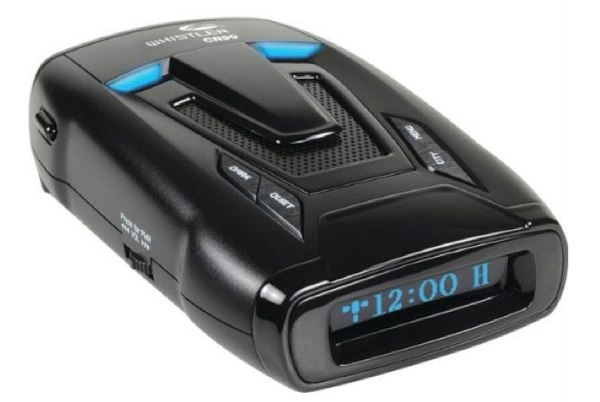
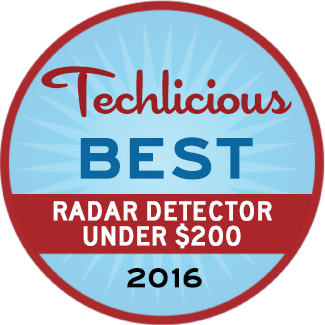 Radar/laser detector prices range from below $100 to more than $1,000, with the sweet spot for some of the best in the $400-$600 price range. We’ve reviewed Escort’s Passport Max line, its sibling the Beltronics GT-7 and Cobra’s latest 9200 BT, all of which offer excellent performance, at a cost.
Radar/laser detector prices range from below $100 to more than $1,000, with the sweet spot for some of the best in the $400-$600 price range. We’ve reviewed Escort’s Passport Max line, its sibling the Beltronics GT-7 and Cobra’s latest 9200 BT, all of which offer excellent performance, at a cost.
These models start at $350 for the Cobra and range up to a quite pricey $650 for the top-of-the-line Escort Passport Max 360. That’s probably much more than the average driver would be willing to spend, however. Could something priced for a more budget-conscious consumer match these high-end devices?
The answer is yes, for the most part. The Whistler CR90 offers radar detection capabilities that near those of far more expensive alternatives, for a fraction of the price. At around $150 on Amazon, you could buy almost four Whistler CR90s for the cost of one Passport Max 2.
Of course, with that much of a price difference, there are tradeoffs. The Whistler suffers from more false alerts, thanks to its sensitivity to vehicle collision avoidance systems, and doesn’t have a multi-color, hi-res display with detailed alert information. However, if you can put up with those inconveniences, the Whistler CR90 offers superb bang for the buck in radar detection.
[Note: Our performance review is based on our extensive testing with the Whistler CR85 model. The CR85 and CR90 are identical as far as radar detection technology.]
I’ve driven hundreds of miles across multiple states using the Whistler CR85 on its own and head-to-head with other detectors. In almost every instance, the CR85 provided ample warning of police radar to slow down in time. The Passport Max units were usually a hair quicker to go off, though this wouldn’t matter in most scenarios.
The extra sensitivity of the Passport paid off in the mountain highways of Pennsylvania. Coming down a long hill, the Passport started beeping with no cop in sight. As I started to round a turn at the bottom, the Whistler started squawking, too, and there, tucked inside the curve, was the LEO (law enforcement officer). The Passport warned me in time, I don’t know if I would have been as lucky with the Whistler.
On K Band, commonly used for photo radar, detection distances were identical between the Max 2 and the CR85. Both provided adequate warning. I never encountered a LEO using X band radar, and it’s unlikely you will either as this band has largely fallen out of use for vehicle speed detection.
I did not test laser detection. Because laser guns have such a narrow beam, the only time you’re going to get a laser warning is when you’re already nailed and I didn’t encounter laser in use in my driving.
Limiting false alarms is almost as important as detecting "real" signals. Too many false alarms may cause you to ignore the next valid alert or decide to stop using the radar detector altogether. And, if nothing else, they’ll annoy the bejezus out of you.
In this area, the Whistler CR85/90 can’t keep up with the newer DSP (digital signal processing) technology in the Escort, Beltronics and Cobra 9200 BT models. It’s not terrible, but the Whistler does have a particular affinity for the collision avoidance system in Audis. In the city, the Whistler generated about the same number of X-band and K-band alerts from automatic door openers and the like as the Passport Max models. Turning off X-band on the CR85/90 helps, and I would go as far as to turn off K-Band, too, unless you know LEOs are using it in your driving area.
The CR90 has a built-in red light camera database, and that can lead to unnecessary warnings, as well. If you’re driving on an urban highway, the CR90 will alert you to red light cameras on nearby side roads. These alerts are easy to ignore, since they’re obviously irrelevant, but they can get irritating. If red light cameras aren’t a concern for you, you’re better off going with the non-GPS CR85.
Unlike Escort and Beltronics, the Whistler has no way to store known false alerts in its on-board database – a definite minus.
The Whistler CR85/90 (the two have identical cases) looks like your typical radar detector, with a black, rectangular case (2.9 x 1.2 x 4.5 inches). It’s not as big as the Passport Max line, but considerably larger than the Cobra 9200 BT (if you want flashy, the copper-accented Beltronics GT-7 is the one for you). The CR90 is also light at 12.6 ounces, so there is less jiggling on its dual suction cup mount than with the very heavy Passport Max lineup or GT-7.
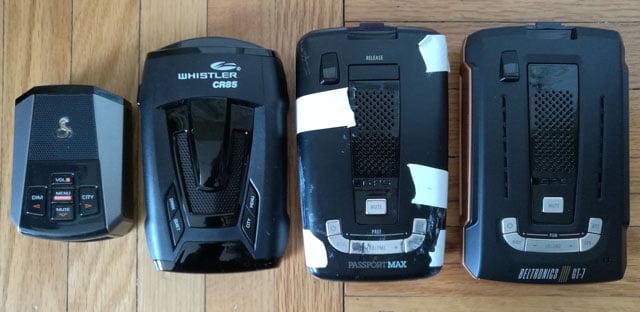
Left to right: Cobra DSP 9200 BT, Whistler CR85, Escort Passport Max (tape & super glue, not OEM), Beltronics GT-7
The display on the CR90 is pretty spartan – monochrome blue with basic information about radar frequencies, red light distance, etc. That said, it is very easy to read, even in bright sunlight. And Whistler includes two additional “periscope” lights on the top of the unit that flash during alerts, just in case you miss the squawking of the unit and the main display’s alert. “Real Voice Alerts” provide an initial verbal warning of the detected radar band.
Both the CR85 and CR90 have four buttons on the top: Dark, Quiet, City and Menu. Unfortunately, they share the characteristic of most other radar detectors in being small and hard to distinguish from a driving position. On the side is the switch that controls power and volume; this one is pretty easy to use.
The CR90 contains internal GPS along with a pre-loaded speed and red light camera database, which can be updated via USB from your computer. There is no charge for updates, unlike Beltronics and Escort. As you near a camera, the CR90 provides an alert for the type of camera (red light or speed camera) and the display will count down the distance. You can manually add new cameras when in the same location.
Competitors to the CR90 offer smartphone apps that connect with other users of their detectors to report real-time speed trap alerts (Cobra’s iRadar and Escort/Beltronics’ Escort Live). Whistler doesn’t have a comparable offering, but I don’t see that as a major drawback. First of all, those services can be very expensive ($49.99 a year, in the case of Escort Live). Secondly, you can download free apps, like Waze, that offer similar functionality. And, if you really were hell-bent on using Escort Live, you can still download the app and subscribe even if you’re not an Escort user, you just would have to rely on your phone for notifications, rather than getting them through a Bluetooth connection on your detector.
Radar detectors are one of those products that are extremely difficult to test because of idiosyncrasies in the test environment – the type of radar used, the elevation and curvature of the road, obstacles in the radar path, etc. I’ve driven hundreds of miles across multiple states the CR85, yet I still look at other people’s experiences to get a holistic view of the performance.
Among professional reviewers, most were very impressed with the Whistler’s performance, with one notable exception.
Radarbusters.com, one of the best known testing sites, found that “Both the Whistler CR85 and CR90’s performance out ranks all of the other radar detectors we have tested in the under $200 price category.”
Veil Guy, another long-time reviewer, found that “The CR90 and CR85 are without question the best values currently on the market. Either one should definitely be on your short list.”
And Radartest.org agrees that the “Whistler CR90 stands out for its elegant, intelligently-engineered and sophisticated design, not to mention its effectiveness in countering radar, lidar and red light cameras.”
The contrarian opinion is provided by Vortexradar.com, who found the performance of the CR85 to be the worst performing among a group of ten detectors in its test. However, their results are so out-of-line with the other testers and my own experiences that I suspect that the unit they were using may have had issues.
User reviews on Amazon support my hypothesis. Overall, the CR90 gets a very respectable 3.8 out of 5 stars on Amazon, with about 70% of reviewers giving it 4 or 5 stars. However, there is a 20% minority who has issues with the unit, including poor detection. I would recommend testing your unit after purchase with a known speed camera or speed trap location and returning for a replacement if you have issues with detection range. Note that defective detectors are not an issue unique to Whistler, as there are similar reports about units from other manufacturers, including market leader Escort (also see note on Uniden below).
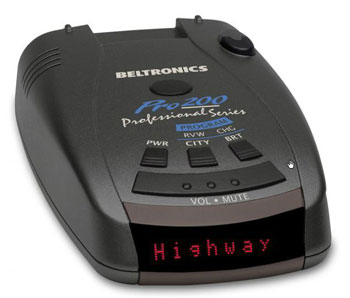 While there is no shortage of detectors under $200, most are old models that have performed poorly in reviews. One exception is the Bel Pro 200. While nearly a decade old and running Beltronics’ older analog technology, it has performed very strongly in detection tests, beating the Whistler CR85/90’s predecessor, the Pro 78 SE, across K and Ka-bands, according to radartest.com. The difference between the two wasn’t huge, but the Bel Pro 200 was the victor. Similarly, Radar Roy also had great test experience with the Pro 200, declaring it the “best radar detector costing less than $250”. Owner reviews have been strong as well, with 4.4 out of 5 stars on Amazon.
While there is no shortage of detectors under $200, most are old models that have performed poorly in reviews. One exception is the Bel Pro 200. While nearly a decade old and running Beltronics’ older analog technology, it has performed very strongly in detection tests, beating the Whistler CR85/90’s predecessor, the Pro 78 SE, across K and Ka-bands, according to radartest.com. The difference between the two wasn’t huge, but the Bel Pro 200 was the victor. Similarly, Radar Roy also had great test experience with the Pro 200, declaring it the “best radar detector costing less than $250”. Owner reviews have been strong as well, with 4.4 out of 5 stars on Amazon.
Feature-wise, the CR90 has the Pro 200 beat. There is no GPS or red light/speed camera database on the Pro 200. And the Pro 200 has a very old school low-resolution, though still functional, display.
Price for the Bel Pro 200 has come down considerably and is now in the $170 range on Amazon, a little higher than the CR90, and about $45 over the CR85. So if the lack of red light camera detection isn’t an issue, this is a potential alternative. Be sure to only buy direct from Amazon—Beltronics will not honor the warranty if purchased from an unauthorized dealer.
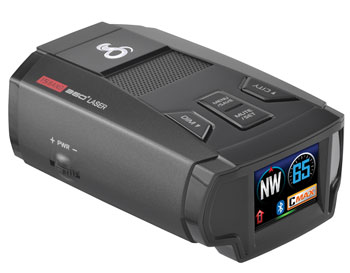 At only $109 on Amazon, you may be tempted to give the Cobra SPX 7800BT a shot. Don’t. It gets terrible reviews for detection and will drive you nuts with false alerts. Vortex Radar found that it failed to detect Ka-band until within range of a police officer’s radar gun. Radar Roy was equally unkind after testing the 7800BT’s performance, summarizing the unit as “Garbage in, Garbage out, Garbage Throughout.”
At only $109 on Amazon, you may be tempted to give the Cobra SPX 7800BT a shot. Don’t. It gets terrible reviews for detection and will drive you nuts with false alerts. Vortex Radar found that it failed to detect Ka-band until within range of a police officer’s radar gun. Radar Roy was equally unkind after testing the 7800BT’s performance, summarizing the unit as “Garbage in, Garbage out, Garbage Throughout.”
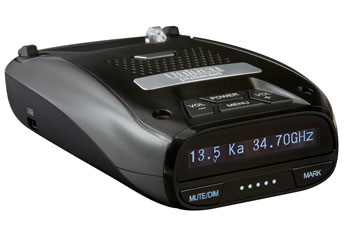 The LRD950 was highly rated by Vortex Radar, though Radar Roy initially flunked it for poor performance. Radar Roy later amended his review believing that his unit may have been defective since his results differed so much from other reviewers (see my note above about defective detectors in my own testing of the CR90 compared to Vortex Radar).
The LRD950 was highly rated by Vortex Radar, though Radar Roy initially flunked it for poor performance. Radar Roy later amended his review believing that his unit may have been defective since his results differed so much from other reviewers (see my note above about defective detectors in my own testing of the CR90 compared to Vortex Radar).
In any regard, this model was recently discontinued and is out of stock on Amazon and many other sources. Its replacement, the Uniden DFR7 will be priced considerably above $200 when it hits stores soon. Its sibling, the DFR6 will be under $200, but lack the GPS capabilities of the DFR7 or Whistler CR90. While the new models are being highly talked up, I have yet to see any actual hands-on testing and we have not yet received a response from Uniden on exact availability dates.
At around $150, the Whistler CR90 offers solid detection performance and a wide range of features. If you’re in the market for a detector that includes red light/speed camera warnings, you won’t find anything else close to this price point worth considering. The next best option would be the Beltronics GT-7, which currently retails for around $500. The GT-7 has slightly better detection, fewer false alerts and convenient features, such as the ability to lock out known false alarm locations. So if you have the money, go for the GT-7. Uniden’s DFR7 will offer a less expensive alternative at around $300, when it comes to market later this year, but we don’t have timing for that nor has there been any testing to confirm its performance. So if you’re in the market for a budget GPS-enabled radar detector today, the CR90 is the one for you.
For those who don’t want red light/speed camera warnings, the Whistler CR85 is a reliable performer. The Bel Pro 200, though, may be a slightly better choice, depending on the current price differential on Amazon. And since Beltronics will not honor warranties from unauthorized dealers, you need to be sure you order directly from Amazon, not a third party seller. Uniden’s new DFR6 will also be in competition for under $200. However, similar to the DFR7, we don’t have an exact release date nor test results.


Car Tech & Safety, Travel & Entertainment, Guides & Reviews, Top Picks
From Denis on June 21, 2016 :: 9:08 am
I mean I have never heard of a radar detector that can be used publicly. I always knew that to operate a radar there are 2 things needed. one is transmitter and another is receiver. Whats the use of this radar detector?
Reply
From Josh Kirschner on June 21, 2016 :: 1:22 pm
In the US, radar detectors have been available for decades and are legal for use in passenger cars in all States except for Virginia and Washington DC. The radar detector picks up police radar and laser transmissions used to measure vehicle speed for the purpose of traffic law enforcement.
Reply
From Peter McClellan on July 27, 2016 :: 1:32 am
Josh,
This was an excellent review! Ibresllt appreciate the time and effort you put into doing the research on these 4 Detectors! Quick question for you though, I’m seeing the Beltronics Diablo all over the place now brand new fro between $170 and $199 and was wondering if you’ve had a chance to test it out yet? Its my understanding that the Diablo is basically just the Bel Pro 500 with the option to use Spanish or English for the voices. If this is the case it would theoretically seem like a good alternative to the CR90 due to its price and capabilities. The Diablo has GPS and uses DSP and is basically the Pro 300 on steroids ha ha. I can’t seem to find anyone thats really given it much of a test and I’m a little suspicious about why it would be priced so low when the same detector (Pro 500) is going for over $300 on Amazon right now. I tried to ask Vortex his opinion about it but all he would say is that its an outdated detector with Spanish voices. He didn’t seem to interested in testing it out or giving much of an opinion on it for some reason. I’ve noticed that he seems to primarily be interested in the higher $ detectors for whatever the reason. I’ve found that most people interested in picking up a radar detector have a limited budget including myself and can’t afford the high end $400-$600 Escort/Beltronics and Valentine models. This is why I really appreciated your review because I knew that you were interested in helping the majority of people who can’t afford those upper scale models. Anyway, I was just curious to see if you’ve had a chance to investigate this Beltronics Diablo phenomenon thats currently out there right now for such a great price? With everyone making such a big deal right now about the Uniden LRD950/DFR7, it would seem that the Diablo is much better deal @$199 with similar capabilities. Especially since the the newer Uniden replacement DFR7 is running over $300 right now. Thanks again for your time Josh, I look forward to hearing your thoughts!
Reply
From Josh Kirschner on July 27, 2016 :: 12:06 pm
I don’t know anything about the Diablo specifically beyond what you already know – it’s a Spanish language version of the Pro 500. I’m assuming that Beltronics didn’t get much interest in the model so they’re discontinuing and dumping existing units on the market. So if you can get it at that price, it’s a great deal (seeing it for $199 now on Amazon through Beach Camera http://amzn.to/2aha9oR). Whomever you buy it from, though, make sure it’s returnable in case you have any issues. Especially as Beltronics says they will not honor warranties from “unauthorized” sellers.
I’m also now seeing the Cobra BT9200 now on sale for under $200 on Amazon (http://amzn.to/2aha9oR). It’s a very good detector that shares technology with the high-end Escort models. At the time I initially reviewed it, it was $350 (far too much, in my opinion). At $199, that would be my choice if you can’t get a Diablo with warranty for those closeout prices (and you don’t really care about the red light camera database).
Reply
From Peter M on July 31, 2016 :: 11:59 pm
Hey Josh,
Thanks for the excellent advice on your last post. I meant to get back with you sooner but after typing my response the other day my Google Chrome browser crashed and I didn’t have the energy to retype it that night. I actually purchased the Cobra DSP 9200 from Best Buy a few weeks due to it being marked down to $199, I think it’s actually still that price right now. I was very impressed with the overall design, very small and lightweight, crisp LCD display that was very easy to read and of course the mark down from $349.99 to $199.99 made it a no brainer. Unfortunately I ended up being very disappointed with the DSP9200, primarily because of the over sensitivity and lack of GPS. I mean it was literally chirping and beeping every other block which surprised me because I knew that they were incorporating Escort’s DSP technology to help eliminate a lot of the false alarms. Using the Cobra I-Radar App did help with that over sensitivity a little but not completely. I also thought that it was a bit of a hassle to constantly be monitoring the App on your phone and marking the false alerts while trying to drive at the same time. The false alarms and constant chirping was too much for me to handle, it got to the point where I just couldn’t stand it anymore so I eventually just ended up returning it. I guess it’s possible that I may have received a defective unit but I’m not sure if that was the case or not.
I agree with your advice regarding the Bel Diablo, although now it looks like the price is starting to ramp back up again and I have heard people complaining about purchasing the Diablo as brand new only to find out that it had been used and either refurbished or returned to the vendor, only to be resold again as brand new, never opened. Your point that you made regarding Bel/Escort not honoring the warranty for unauthorized dealers also made me a little nervous as well.
Ok so given my experience with the DSP9200 and the risky nature of purchasing the Diablo, what other recommendations would you make? Your the expert here, so your opinion means a lot to me, please correct me if I’m wrong but it seems like purchasing a detector with imbedded GPS is the way to go due to its ability to help block the false alerts right? The only issue with that strategy is the $, those devices can get really pricey as you already know. Looking at the list below, if you had to pick 1 or maybe even your top 2 which top 2 would you lean towards?
1. Roll the Dice on the Bel Diablo? ($229.99)
2. Whistler CR90 ($166.85 on Amazon)
3. Escort Passport 9500IX ($329.99)
4. ESCORT Passport Max (Price has dropped to $300 on Amazon)
5. UNIDEN DFR7 (Price is also around $300)
6. Whistler Pro-3600 ( was originally $400-$500 but price has now dropped to $254 on Amazon, installation and setup look tricky and time consuming)
Reply
From Peter M on August 02, 2016 :: 10:15 pm
Hey Josh,
Looking at the list below, if you had to pick 1 or maybe even your top 2 which top 2 would you lean towards? Or if you have another pick or two I would live to hear your thoughts.
1. Roll the Dice on the Bel Diablo? ($229.99)
2. Whistler CR90 ($166.85 on Amazon)
3. Escort Passport 9500IX ($329.99)
4. ESCORT Passport Max (Price has dropped to $300 on Amazon)
5. UNIDEN DFR7 (Price is also around $300)
6. Whistler Pro-3600 ( was originally $400-$500 but price has now dropped to $254 on Amazon, installation and setup look tricky and time consuming.
Reply
From Josh Kirschner on August 04, 2016 :: 3:22 pm
I would take a chance with the Diablo. With the caveat to order it from somewhere that has a decent return policy since if you have issues out of the box, Bel may not cover the warranty.
If you want to spend (a lot) more, there is a new version of the 9500IX coming out this fall which is essentially a Max 2 in a redesigned 9500IX case with an upgraded mount (the rattle in the Max 2 is not pleasant). I would definitely stay away from the Max because of issues with the case falling apart (Escort says this was resolved, but…) and the rattling mount.
There are no reviews out there for the Uniden DFR7, so hard to judge. Performance is probably very good, but who knows what bugs it may have. I’ve reached out to Uniden multiple times for more information/review units and never heard back from anyone. One of their competitors (take this with a big grain of salt) told me they may be existing the US market for detectors, which would make me a little concerned about whether the speed/red light camera databases will continue to be updated.
I would not go with the Whistler Pro because I don’t see what it offers in terms of price or performance advantage over other models.
From Josh Kirschner on August 26, 2016 :: 9:47 am
Hi Peter,
Did you end up purchasing a detector yet? How is it working for you?
Best,
Josh
From Brian Gomez on August 02, 2016 :: 5:58 am
First, I bought one Whistler Xtr-265 and one Xtr-145 at http://www.thingsreports.com/best-radar-detector-under-100/, just to compare these two models. I put both on at the same time, going to work and driving a family member to school. Xtr-265 was being too sensitive to every single, mostly are false alarms. Xtr-145 model only alerted you when there was real police radar guns or strong electronic wireless traffic cameras.
Both models are easy to operate and do not cost much money to buy. Like many previous reviews, I don’t speed but just want to get warnings ahead. Just because state or city politicians could not get their budget balanced, they are now trying to overwork the police force to get every penny they could from the local residents.
Reply
From Peter M on August 02, 2016 :: 7:42 pm
Thanks for the heads up on the Whistler products. For some reason Whistler has been getting a really bad name when comparing to the other Big names like Escort and Beltronics, and Valentine for that matter. The only other company that has a worse reputation is Cobra, just ask Vortex ha ha. It seems like the CR90 might be the best bang for the buck because if you want something that has simar bells and whistles you have to spend around $300 for the Escort Passport series or the Uniden DFR7. The Beltronics Pro 500 is also in that same $300 category as well. I’m also kind of curious about the Whistler Pro 360, they’ve dropped the price on that down to $255 and it comes with GPS and a remote antenna.
Reply
From Josh Kirschner on August 04, 2016 :: 3:44 pm
My suspicion is that there may be manufacturing variability in the Whistler product line which causes some units to perform much better than others. That would explain why we and Radar Roy saw good performance with the CR-85/90 and Vortex saw poor performance.
This isn’t an issue exclusive to Whistler. Radar Roy saw very poor performance in one of his Uniden units that others found to be an excellent performer. He went so far as to discount his own evaluation, based on the discrepancy. And my Passport Max case broke into pieces during my testing, a relatively common issue that affected some, but certainly not all units.
I’ll also say that people treat radar detector brands a lot like they treat computer brands. People still rant on about how much Windows sucks versus Mac, yet they haven’t actually used Windows since XP (or, gasp, Vista). If you once had a cheap Cobra unit, you’ve now sworn off Cobra, even though their latest BT 9200 has nearly identical technology to the Escort Max line.
All that being said, if money were no object, I would go with Valentine (if you’re into tinkering) or the Max 360.
Reply
From Peter McClellan on August 29, 2016 :: 11:49 pm
Hey Josh,
Thank you for following up with me, I really appreciate that! I ended up picking up the Uniden DFR7 because I kept hearing how great the LRD950 was and because everyone seems to believe that the DFR7 is basically a repackaged 950. I’ve only had it for a few days though so I haven’t quite had enough time to test it yet. So far it seems to work pretty well although I was taken back by how light it was, it almost feels cheap ha ha. It’s definitely much lighter than the Escort Max. I’m a little bit nervous about my purchasing the DFR7 though due to it looking and feeling so cheap. The fact that Uniden doesnt have the same prestigious name in the business as Escort and Beltronics/Valentine doesn’t help much either. I read someone’s review on Amazon stating that the DFR7 is hand calibrated instead electronically calibrated by some third party company in Korea that Uniden hired to actually manufacture their radar detectors. Have you heard anything about this claim? To be completely honest with you, I was very tempted to pick up a passport max due to the $286 price point until I saw your comment as well as many other comments about the poor quality. Have you had a chance to get your hands on one of these units yet Josh? If not have you spoken to anyone or read anything yet about the overall quality and performance of the DFR7? Interestingly enough the Max is actually cheaper right now on Amazon and I saw that Vortex was recommending it now due to the major price drop ($286). However, as you said, there are a lot of reviews out there stating that its so poorly built that it literally falls apart over time when attached to their sticky cup.
From Josh Kirschner on August 04, 2016 :: 3:30 pm
First off, I don’t see any evidence that that site has actually tested any radar detector, ever. It’s likely just making quick lists to pull in search traffic and drive affiliate commissions.
Secondly, I would strongly recommend against any detectors under $100. The performance in this category is likely to be very poor. If you want cheap, spend a little more and go with the Whistler CR-85.
Reply
From Vortex Radar on July 23, 2017 :: 4:18 am
Hey Josh, thanks for doing your research compiling your findings!
I had the same concern about the CR85 I tested with not being up to par and I brought this up with Mike B (who designs Whistler’s detectors) back at SEMA last year. He sent me out a CR93, his latest radar detector, and I’ve had a chance to test it out too, only to find that it was sadly a poor performer as well. You can see more info about it here:
http://www.vortexradar.com/2017/07/whistler-cr85-cr88-cr90-cr93-review/
The DFR6 and DSP9200BT will smoke it in range, no question, along with offer superior blind spot filtering. If you’re set on a sub-$200 detector, IMHO those two are better picks than the Whistler.
Reply
From Tina Crowley on April 11, 2018 :: 12:14 am
Hi,
I want to buy a link (dofollow) from http://www.techlicious.com to my site. I can pay you $ 60. Can you help me ?
Regards
Reply
Leave a Comment Here
Home | About | Meet the Team | Contact Us
Media Kit | Newsletter Sponsorships | Licensing & Permissions
Accessibility Statement
Terms of Use | Privacy & Cookie Policy
Techlicious participates in affiliate programs, including the Amazon Services LLC Associates Program, which provide a small commission from some, but not all, of the “click-thru to buy” links contained in our articles. These click-thru links are determined after the article has been written, based on price and product availability — the commissions do not impact our choice of recommended product, nor the price you pay. When you use these links, you help support our ongoing editorial mission to provide you with the best product recommendations.
© Techlicious LLC.




